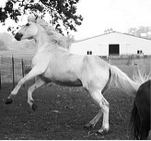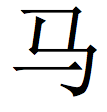| Course Code | CHIN | |
| Co-ordinator | Laura Luo | |
| Levels Offered | 1st, 2nd, 3rd, 4th year | Full course list * |
| Minor Available | Yes | More details |
| Placement Test | Required for students with previous knowledge | More details |
| * Not all courses are offered every term. Please check Carleton Central and/or the Public Class Schedule for course availability. | ||
About the Language
Why you should study Mandarin Chinese
Maybe you’ve heard it’s too hard to learn Chinese. Maybe you get intimidated at the thought of having to learn all those cryptic signs and symbols you’ve seen on Chinese food menus. And it’s true, learning Chinese is not easy. But it can be done and every year students who graduate from Carleton with a minor in Mandarin Chinese use their language skills and curiosity to find jobs and/or higher education opportunities in cities across China: Beijing, Nanjing, Shanghai, and Taipei.
In addition to offering a minor in Mandarin Chinese, Carleton also has exchange agreements with universities throughout China.
About the Language
Even though the Chinese language may at first appear cryptic, there is a curious logic and efficiency that underlies it. The days of the week, for example, are “star period one…star period two…star period three…” etc. It’s the same for months.
And the written language, which may seem so arbitrary, is actually in some cases made up of stylized shapes from the real world. Check out the character for “horse” below.
 |
Ancient Seal
|
Traditional
|
Simplified
|
| Photo Credit: “Knotty Pines Farm 2013” by Kate Gardiner. Saved 8 July, 2015 from Flickr. CC BY-NC 2.0 | |||
Speaking of written language, Chinese has influenced other languages too; like Japanese. In fact, Kanji, one of three Japanese writing systems, is made up entirely of Chinese characters.
Fortunately you don’t need to read Mandarin to speak it. Pinyin is a Roman writing system that represents Chinese sounds and tones and allows you to sound out a word without knowing characters.
Here are some other fun facts about the language:
- +1 billion speakers worldwide (Ethnologue, 2013)
- one of the six official languages of the United Nations
- more than 50,000 characters, but you only need about 2500 to read 90% of everyday language
- a form of texting shorthand is evolving in Chinese. For example, “3” is “san”, so “3Q” sounds like “thank you” in English. “8” is “ba”, so “88” sounds like “ba ba” or “bye bye” (Source)
- China is the world’s 4th largest country, but only has one time zone.
Registration Information
Space in language courses is limited. Register as early as possible. If the course is full when you attempt to register, please submit a Course Registration Override Request or, if applicable, add your name to a waitlist on Carleton Central. Click here to learn more about how waitlisting works.
Video created by Michael, Tomiwa & Nick as a class project in Carleton University’s Interactive Multimedia Program.



